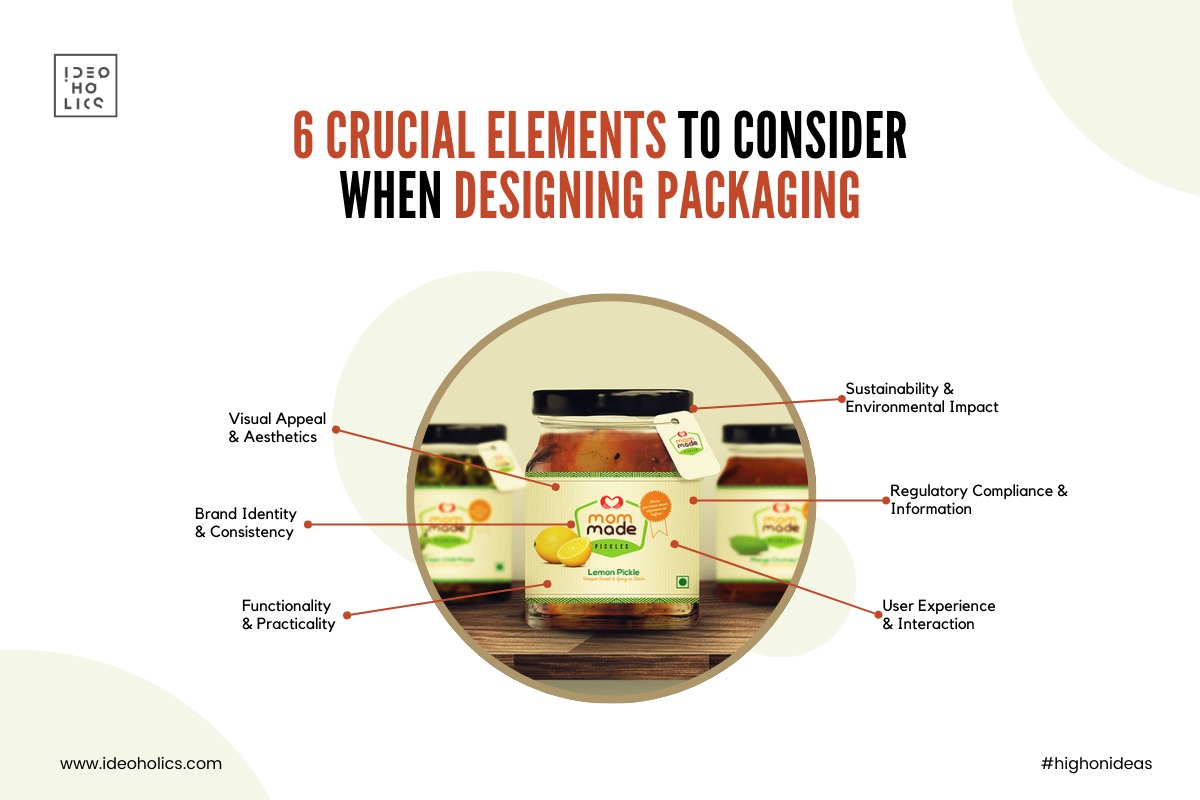
6 Crucial Elements to Consider When Designing Packaging
Designing packaging involves more than just creating an attractive exterior; it’s a critical element of branding and product presentation that affects consumer perception and experience.
Here are six crucial elements to consider when designing packaging:
1. Brand Identity and Consistency
• Description: Packaging should reflect and reinforce the brand’s identity. This includes using consistent brand colors, typography, logos, and overall design style.
• Benefits: Consistency in packaging helps build brand recognition and trust. It ensures that the product is immediately identifiable and aligns with other brand touchpoints, creating a cohesive brand experience.
• Implementation: Ensure that packaging design elements align with the brand’s visual identity guidelines. Use familiar colors, fonts, and logos, and consider how the packaging fits within the overall brand narrative.
2. Functionality and Practicality
• Description: The packaging must serve its primary function of protecting and preserving the product. It should also be practical for both the manufacturer and the consumer.
• Benefits: Functional packaging prevents damage during shipping and handling, ensures product freshness or safety, and provides ease of use for consumers. Practical packaging also aids in efficient storage and distribution.
• Implementation: Choose materials that provide adequate protection and durability. Design packaging that is easy to open, reseal, and handle. Consider including features like easy-pour spouts or convenient size options.
3. Sustainability and Environmental Impact
• Description: With growing consumer awareness of environmental issues, sustainable packaging is increasingly important. This involves using eco-friendly materials, reducing waste, and considering the life cycle of the packaging.
• Benefits: Sustainable packaging can enhance brand reputation, attract environmentally-conscious consumers, and comply with regulations. It also contributes to reducing the overall environmental impact.
• Implementation: Opt for recyclable, biodegradable, or compostable materials. Minimize packaging size and use design techniques that reduce material waste. Clearly communicate any environmental benefits or certifications on the packaging.
4. Visual Appeal and Aesthetics
• Description: Packaging design should be visually appealing and align with the product’s target market. It should grab attention and stand out on the shelf while conveying the product’s quality and value.
• Benefits: Attractive packaging can increase consumer interest and drive purchasing decisions. Good aesthetics help in making a memorable first impression and differentiating the product from competitors.
• Implementation: Use engaging graphics, colors, and imagery that appeal to the target audience. Ensure that the design is aligned with the product’s positioning and that it communicates the product’s benefits effectively.
5. Regulatory Compliance and Information
• Description: Packaging must comply with industry regulations and standards, which can vary by region and product type. This includes including necessary information such as ingredients, nutritional facts, usage instructions, and legal disclaimers.
• Benefits: Compliance ensures that the product meets legal requirements, avoids potential fines or recalls, and provides consumers with essential information needed for safe and informed usage.
• Implementation: Research and understand the relevant regulations for your product and market. Include all required information in a clear and legible format. Ensure that any claims or certifications on the packaging are accurate and verifiable.
6. User Experience and Interaction
• Description: The packaging should enhance the user experience by considering how consumers interact with the product. This includes aspects like ease of opening, product dispensing, and storage.
• Benefits: A positive user experience can increase consumer satisfaction, encourage repeat purchases, and reduce the likelihood of product returns or complaints.
• Implementation: Design packaging with user-friendly features, such as tear strips, easy-open tabs, or ergonomic shapes. Test the packaging with real users to identify any potential issues and make adjustments as needed.
Integrating These Elements
When designing packaging, integrate these elements into a unified approach:
1. Concept Development: Start by defining the brand identity and target market. Create concepts that align with these insights while incorporating functional and practical requirements.
2. Material Selection: Choose materials that balance durability, sustainability, and aesthetic appeal. Ensure they meet the functional needs of the product.
3. Design and Prototyping: Develop visual designs that reflect the brand and appeal to the target audience. Create prototypes to test functionality and gather feedback.
4. Compliance Checks: Verify that all regulatory requirements are met and that the packaging communicates necessary information effectively.
5. Testing and Iteration: Test the packaging with actual users to ensure it meets usability and functionality standards. Refine the design based on feedback and practical testing.
6. Final Production: Once the design is finalized, work with manufacturers to ensure quality production and consistency across all packaging units.
By paying attention to these crucial elements, you can create packaging that not only protects and preserves the product but also enhances brand perception and delivers a positive consumer experience.







